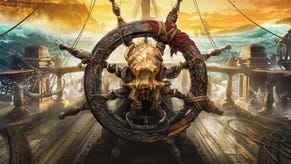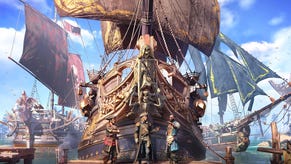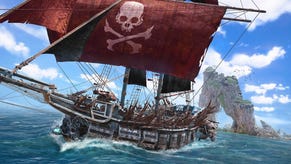Despite a "new vision", Skull and Bones looks a lot like it did five years ago
Itsa boat time.
You probably don't need reminding that Skull and Bones has been a long time coming. Announced in 2017 as a sort of standalone Assassin's Creed Black Flag spin-off, it was to offer a primarily ocean-bound, combat-focused online multiplayer twist on that game's much-loved seafaring, as players battled to become the Golden Age of Piracy's most infamous buccaneer.
Five years and many, many delays later, Skull and Bones is on the cusp of release, with a launch date now set for 8th November on Xbox, PlayStation, and PC. So how have things changed in all that time? Well, honestly, after having seen a near-release version in action during a recent press preview, it's hard to say.
Despite Ubisoft at one point insisting development had been rebooted to accommodate a "new vision" as it "dreamt of something bigger" for the project, Skull and Bones 2022 looks an awful lot like Skull and Bones as presented in 2017 - offering, just as originally pitched, a combat-focused, almost exclusively ocean-bound online multiplayer twist on Black Flag's piratical core, albeit now with a seemingly greater emphasis on PvE. Which isn't a bad thing, of course. Black Flag's seafaring was hugely enjoyable, and a more fleshed out version of that - even five years on - has ample appeal, especially if you're a sucker for a spot of swashbuckling like me.
There is, of course, one complication to Skull and Bones' grasp for piratical supremacy in 2022; Sea of Thieves - which, unlike Skull and Bones, actually made its planned 2018 launch - has now had an almost five-year head start delivering a steadily expanding blast of good old-fashioned pirate adventure. So given Rare's sterling work, is there still room for Skull and Bones?
The immediate impression, based on Ubisoft's latest showing, would appear to be a yes, with Skull and Bones seemingly slotting comfortably into its own particular niche. Certainly, Skull and Bones goes against the grain of Rare's all-encompassing piratical sandbox in plenty of ways, including in its "darker, grittier approach" to piracy, its more traditional vertical progression, its opt-in PvP, and its laser focus on sea combat, despite unfolding across an open-sea map pocked with landmasses.
Don't expect to be digging up buried treasure or raiding long-lost tombs in Skull and Bones; instead, land-based excursions are restricted to specific islands, where, functioning as a kind of base of operations and respawn point, you're able to purchase supplies - ship repair kits, ammo, and food to keep crew morale high and stave off mutiny - select missions, and prepare for the next bout of high seas of adventure. Even scavenging for crafting resources - mining ore, felling trees, skinning wildlife - all seemingly happens while you're boat-bound, interacting with resource nodes conveniently dangling off island coastlines.
Skull and Bones promises a journey that'll take players from humble beginnings as a shipwreck survivor washed ashore on some unknown island to the scourge of the seas, commanding an entire fleet upon the waves. And it's a journey that, as presented, appears to follow a fairly straightforward loop: you establish a base, pick a quest (more of these are promised post-launch in classic live-service style), prepare your ship, then head out to sea for a bit of combat, before returning, ideally laden with treasure, to do it all over again and then again some more.
Each successful mission on the seas increases your notoriety (Skull and Bones' measure of progression), which in turn means more challenging jobs from NPCs and access to new crafting blueprints. As the game goes on, you'll unlock new ship types - from the humble dhow through brigantines and beyond, with specialisations include cargo and navigation vessels - and a steadily expanding arsenal, including cannons, Greek fire, and explosive mortars. There are also different armour types, even cargo bags for more loot, all of which can be mixed and matched to better suit the task at hand.
To illustrate Skull and Bones' basic questing loop, Ubisoft demoed a short mission during its preview event, in which players are asked to steal jars of oil from a nearby island. Once preparations are complete - that is, ships and load outs are selected, supplies are onboard, and friends are invited in for co-op play if desired - it's time to head out to sea. At this point, the camera switches from third-person to a perspective - and indeed an overall vibe - that should be instantly recognisable to anyone that's played the ocean-faring portions of Black Flag.
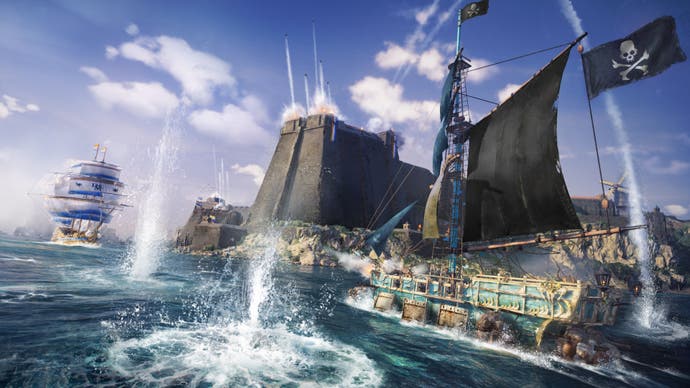
After setting a destination waypoint, you'll find yourself gazing out across a deck of busy crew mates, occasionally switching to the bird's nest for a better view of the horizon. And as you head toward your destination, there's at least the promise of emergent encounters; players can use their spyglass to locate trade routes - perhaps pinpointing laden merchant ships accompanied by a fleet of powerful escorts - or stray into violent storms and monstrous rogue waves. And, of course, they'll run into other vessels - both passive and hostile - which can either be left alone or engaged in battle to steal their hard-earned spoils. Ubisoft notes, incidentally, that taking on ships much smaller than yourself will earn you only a tiny amount of notoriety if victorious, and cost you dearly if you lose (this, presumably, is also intended to bring a degree of balance between better and lesser equipped crews in PvP).
In this instance, though, the destination is a small port town huddled at the edge of an island. Combat begins almost immediately on arrival, with defense towers on the shoreline showering you with cannon fire, while AI ships move in to flank you from both sides, with additional reinforcements being called in along the way. There's a plunder bar that slowly fills over time as you hold back the onslaught (rewarding better treasure the higher it climbs), with some respite coming in the form of beached shipwrecks that can be quickly looted for emergency food, repair kits, even commodities that can be sold back at the den.
It's all appropriately swashbuckling, of course, with the chaos of battle conveyed with plenty of cinematic bluster, but it's also undoubtedly a more traditional, game-ified form of ship combat compared to the looser, more organic approach taken by Sea of Thieves. In Ubisoft's game, there's UI galore: health bars, directional attack arrows, area of effect markers; enemy weak spots are overlaid in red, while a yellow boundary marker denotes how far you can travel before halting an encounter.
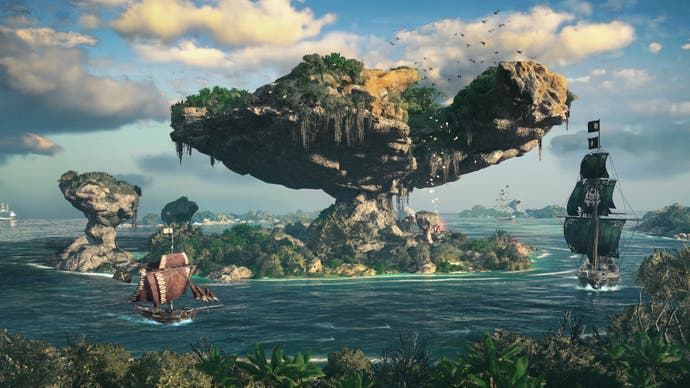
It's not especially elegant, but, all in all, I'd say Skull and Bones looks fine, fun even, and it's encouraging that it's found its own particular piratical niche to occupy. But for a game now arriving five years later than initially planned, it's hard to ignore how limited in scope and ambition it all appears, despite Ubisoft's earlier promises of "something bigger". With such a narrow focus, then, everything's riding on the quality of its combat, and without any hands-on time, it's impossible to say how succesful it'll be. So the question remains, is there enough meat on Skull and Bones to carry it through? We'll finally have an answer this November.




